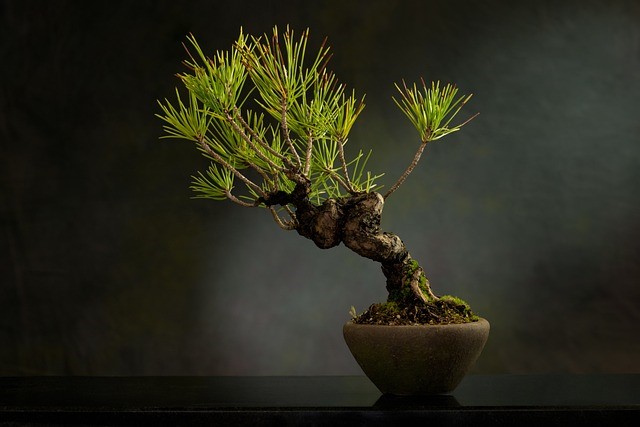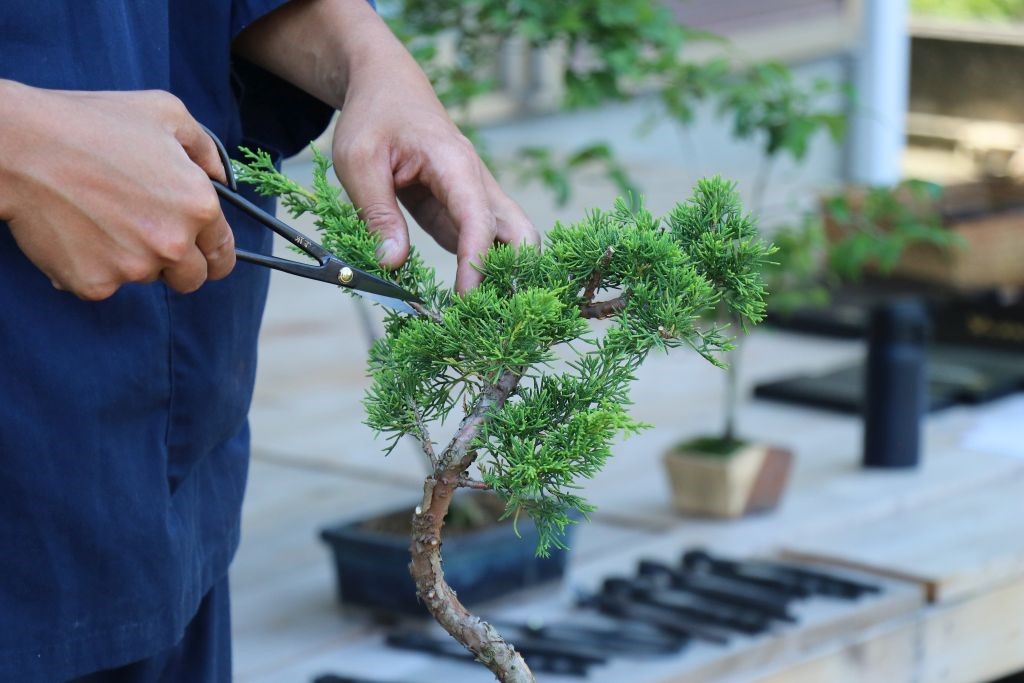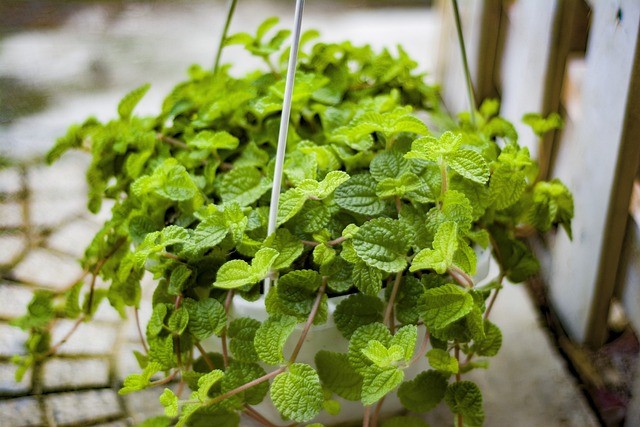What Tools Should I Use for Bonsai Tree Root Pruning?
When deciding on bonsai tree root pruning tools, you should use sharp and clean pruning shears or root shears. Using the wrong tools I’ve found can have a diastrous impact on the growth of your bonsai tree. Growing and maintaining bonsai trees requires proper care and attention, including root pruning. Some other tools you should use for bonsai root pruning are:
- A pair of gloves
- A bucket of water
- A tarp or old blanket
- A dust mask
- Safety glasses
Root pruning is an essential technique to control the size and shape of the root system, which in turn affects the overall health and appearance of the bonsai tree. By doing unnecessary or overly long roots, you encourage the growth of finer feeder roots that are vital for water and nutrient absorption.
To perform root pruning effectively, it is crucial to use the right tools. Sharp and clean pruning shears or root shears are ideal for cleanly cutting through the roots without causing damage or excessive tearing.
These tools ensure precise and controlled pruning, enabling your bonsai tree to develop a balanced and healthy root system.
What Essential Tools For Bonsai Tree Root Pruning Requires?
When it comes to maintaining the health and aesthetics of your bonsai tree, proper root pruning is crucial. This vital process not only keeps the roots in check but also stimulates new growth and enhances the tree’s overall vitality.
To successfully carry out this task, you need to have the right tools at your disposal.
Let’s explore the essential tools required for bonsai tree root pruning and how they can help you achieve the desired results.
Selection Of Proper Tools Based On Tree Size And Root Thickness
Before jumping into the specific tools, it’s essential to understand that the selection of the right tools depends on the size of your bonsai tree and the thickness of its roots.
Smaller trees with delicate root systems require lighter and more precise tools, while larger trees with thicker roots demand more heavy-duty equipment.
By adapting your tools to match the characteristics of your tree, you can ensure a more efficient pruning experience.
Pruning Shears: The Versatile Tool For Root Pruning
Pruning shears are undoubtedly the workhorse of bonsai tree root pruning. These versatile tools allow you to trim roots with precision and ease.
Equipped with sharp blades and comfortable handles, pruning shears enable you to access tight spaces near the base of the tree and remove any unwanted or overgrown roots.
With a simple squeeze of the handles, you can swiftly and delicately cut through the roots, promoting better nutrient absorption and overall root health.
Root Rake: Removing Tangled Roots And Improving Soil Aeration
When it comes to untangling a mess of roots and ensuring proper soil aeration, a root rake is your go-to tool. Designed with multiple thin, prong-like teeth, this tool allows you to gently comb through the roots, separating them and removing any entanglements.
By creating space between the roots, a root rake enhances oxygen flow to the soil, promoting healthy root development.
Additionally, the thin teeth of the rake help you remove debris and improve the overall cleanliness of the root system.
Concave Cutter: Precise Cutting To Promote New Root Growth
For precise and clean cutting during bonsai tree root pruning, a concave cutter is an indispensable tool. With its inwardly curved blades, this cutter enables you to create concave cuts that ensure rapid healing and promote the growth of new roots.
If you remove specific sections of the root ball, the concave cutter helps redirect the energy towards healthier roots, leading to a stronger and more balanced tree structure. Its ability to create clean and even cuts makes the concave cutter a must-have tool for every bonsai enthusiast.
Root Hook: Gently Manipulating Roots Without Causing Damage
To encourage proper root distribution and prevent the root system from becoming untamed, a root hook is an invaluable tool.
Made with a curved metal hook, this tool allows you to gently separate and manipulate the roots without causing any harm.
By loosening the root ball and skillfully arranging the roots, you can guide them into the desired position and maintain a harmonious balance within the tree’s root system.
The root hook’s delicate but effective nature makes it an essential tool for any bonsai enthusiast’s kit.
How To Properly Use Pruning Shears For Bonsai Tree Root Pruning
Pruning shears are essential tools for keeping your bonsai tree healthy and promoting its growth. When it comes to root pruning, using the right shears and employing the correct techniques can make all the difference.
Here is a step-by-step guide to pruning the roots, and share tips for maintaining the sharpness and cleanliness of your shears.
Choosing The Right Pruning Shears For The Job

When it comes to root pruning, having the right tool can greatly impact the success of the task. Here are a few key factors to consider when choosing pruning shears:
- Blade Type: Look for pruning shears with sharp and sturdy blades. Straight-edged or concave blades are most commonly used for root pruning. These blades provide clean and precise cuts, minimizing the risk of damage to the tree.
- Size and Comfort: Consider the size and weight of the shears. Opt for a pair that feels comfortable in your hand and allows for easy maneuverability.
- Quality: Invest in high-quality pruning shears that are built to last. They may cost a bit more upfront, but they will offer better performance and durability in the long run.
Step-by-step Guide To Pruning The Roots With Shears
Proper technique is crucial when it comes to pruning the roots of your bonsai tree. Follow these step-by-step instructions to ensure you do it right:
Prepare: Start by gathering all the necessary tools, including pruning shears, a root rake, and a root hook. Ensure that your tools are clean and sanitized to prevent the spread of any diseases.
Examine the Roots: Carefully examine the roots of your bonsai tree and identify any that are old, damaged, or crossing over each other. These are the ones that need to be pruned.
Trim the Roots: Using your pruning shears, make clean and precise cuts on the identified roots. Trim them back to a healthy length, removing dead or decaying parts.
Work in Sections: It’s best to prune the roots in small sections, working around the tree evenly. This ensures that the tree maintains its balance and receives sufficient nutrients and water.
Avoid Over Pruning: While it’s important to remove excess or unhealthy roots, be cautious not to overdo it. Prune conservatively and regularly monitor the health and growth of your bonsai tree.
Tips For Maintaining The Sharpness And Cleanliness Of Shears
Keeping your pruning shears sharp and clean is essential to ensure their effectiveness and longevity. Here are a few tips for maintaining your shears:
- Sharpen Regularly: Regularly sharpen the blades of your pruning shears to maintain their cutting edge. Use a sharpening stone or a dedicated sharpening tool designed for pruning shears.
- Sanitize: Clean and sanitize your shears before and after each use to prevent the spread of diseases. Wipe the blades with a disinfectant solution and dry them thoroughly.
- Lubricate: Apply a few drops of lubricating oil to the hinge and pivot points of your shears to ensure smooth operation. This will also help prevent rust and corrosion.
- Store Properly: After use, store your pruning shears in a dry and clean environment. Consider using a dedicated storage case or pouch to protect them from dust and moisture.
By following these guidelines for choosing, using, and maintaining your pruning shears, you’ll be well-equipped to perform bonsai tree root pruning effectively. Take your time, be patient, and remember that proper root pruning is essential for the health and vitality of your bonsai tree.

Frequently Asked Questions
How Do You Trim The Roots Of A Bonsai Tree?
To trim the roots of a bonsai tree, carefully remove it from its pot and gently untangle the roots. Trim any excessively long or tangled roots with sharp and clean pruning shears. Ensure you maintain a balance between the root mass and the foliage of the tree. Finally, repot the bonsai using fresh soil.
What Are The Tools Used For In Bonsai?
Bonsai tools are used for pruning, shaping, and maintaining bonsai trees. These tools include scissors, shears, wire cutters, concave cutters, and branch benders. They are designed to provide precision and control in the delicate art of bonsai cultivation.
Is It Necessary To Trim The Roots When Repotting A Bonsai?
Trimming the roots when repotting a bonsai is necessary to maintain its health and encourage proper growth. By trimming the roots, you can remove tangled or damaged ones, control their size, and promote new root growth. This ensures that the bonsai receives adequate nutrients and prevents potential root problems.
What Should I Use To Prune Bonsai?
To prune bonsai, use clean, sharp pruning shears. Make precise cuts to remove dead or overgrown branches. Ensure proper care is taken while pruning to maintain the overall shape and balance of the bonsai tree. Remember to regularly sterilize the tools to prevent the spread of diseases.
Conclusion
In the world of bonsai tree root pruning, having the right tools is crucial. By using the right tools, you can ensure precision, and efficiency, and promote the overall health of your bonsai tree. From concave cutters to root hooks, each tool serves a specific purpose in the root pruning process. So, make sure to invest in high-quality tools and educate yourself on their proper use. Happy pruning and enjoy the beauty of your bonsai tree.

